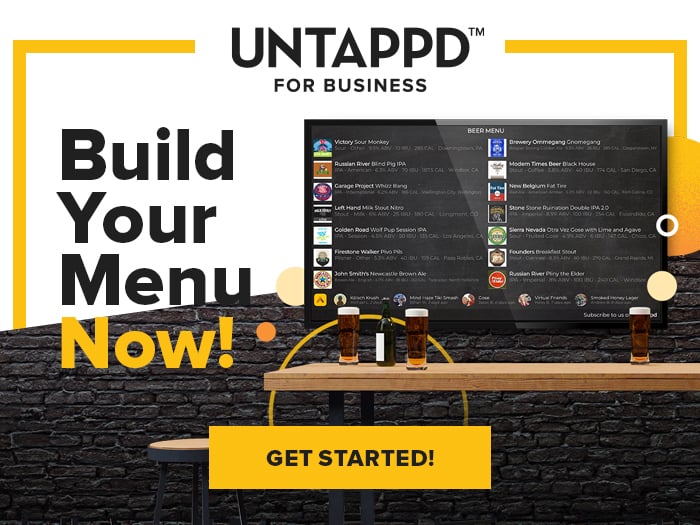A Restaurateur’s Guide To Menu Design
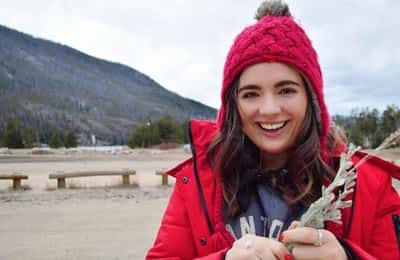
September 26, 2022

On average, diners only look at a menu for 109 seconds, according to a Gallup poll cited in a Canva article on menu design hacks. Let that sink in. That’s about as long as it takes to pump a full tank of gas.
Since time is of the essence, it’s important that you thoughtfully consider the layout, standard menu size, dish titles, etc. After all, your menu is your biggest and most important sales pitch.
It’s a persuasive and useful tool that, if designed and built appropriately, will increase sales and keep your restaurant fully booked each day.
Let’s examine the foundations of restaurant menu design and how you can leverage a seemingly simple list of dishes and beers to boost your bottom line.
What We’ll Cover in This Piece:
Understand Your Brand
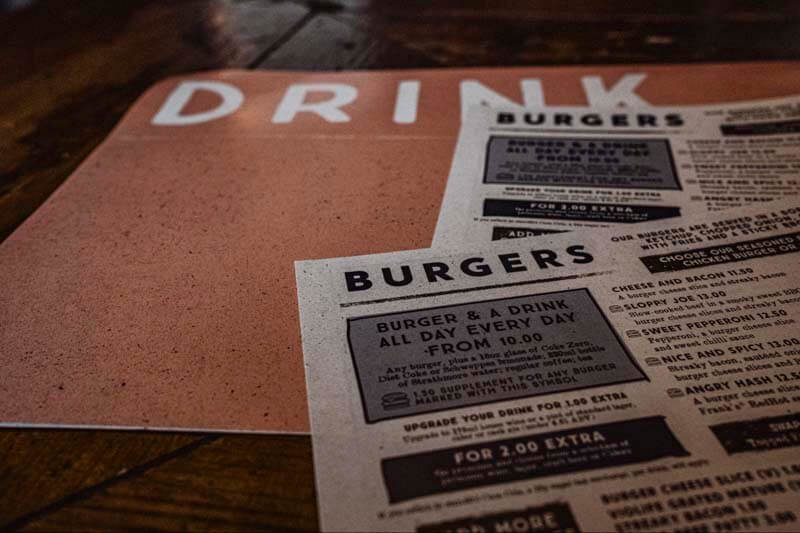
A restaurant is a lively, ever-changing environment. So the menu should reflect any big changes from a new chef, new culinary concepts, or updates in management.
Toast reports that thirty-one percent of restaurateurs update their menu on a monthly basis. While twenty-four percent do it seasonally.
This makes your menu the perfect billboard, if you will, to showcase your brand. This allows you to flex more control over your offerings and design.
commonly, many restaurants opt for a menu that does not feature images of the food. Instead, they rely on descriptions, highlighted by ingredients or cooking style, to sell the dish.
If the food is the beating heart of your business, the menu design is the heart and soul.
But just like many other aspects of the business, menu design combines art and science.
So let’s show you some ways to freshen up your menu-making approach.
The Benefit of Your Menu Layout
We are all taught to read from left to right—but that doesn’t mean your menu layout needs to follow the same flow.
In fact, there are a few creative strategies with menu layout that can actually persuade consumers to purchase items with high-profit margins.
To start with, customers are likely to scan the upper right corner of a menu first. Leverage this area to feature your top money-making dishes.
Serving your most expensive food first can enhance sales and make the other offerings seem more fair in comparison.
Alternatively, one-third of patrons consider picking the first dish they see, so Restaurant Business recommends the idea of “menu positioning” as an effective and profitable layout for a restaurant's menu.
In simplest terms, this means grouping at least six to eight items of your menu into divided sections. For example, starters, main course, soups & salads, and desserts. This size and scale is ideal for thoughtful menu item placement.
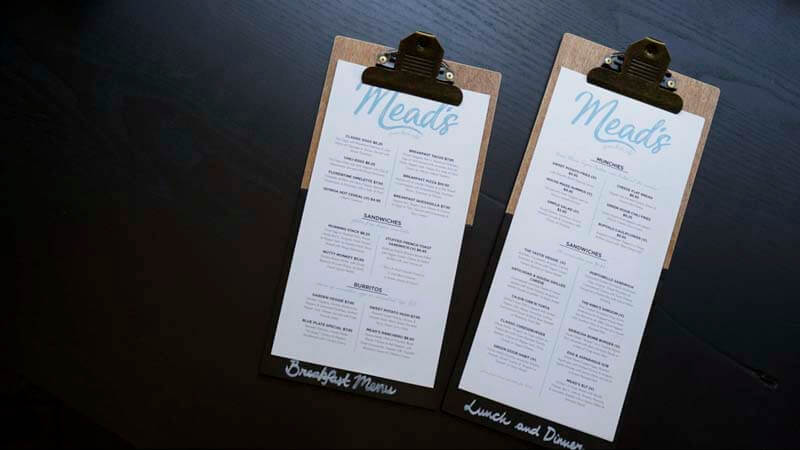
To maximize this strategy, find out which dish in each category makes the most money; list this item first.
In that same vein, place the offering with the second-highest gross profit last and the lowest-profiting one in the middle.
The Psychology of Descriptive Words
When reading a menu, there are particular terms that draw customers' attention. Descriptive words like "crispy," "fresh," or "spicy" tell customers about the meal they're about to order while evoking a feeling.
Consider the following two examples:
- A chicken sandwich with lettuce and tomato. Side of fries.
- A crispy chicken sandwich with lettuce and juicy tomato. Includes a side of fresh-to-order french fries.
It’s just like storytelling. Use descriptive words to set the scene and build anticipation for what’s to come. This can be a fun and creative part of building your menu. By adding descriptive words to an item, you increase the dish’s attractiveness and quality.
Additionally, getting customers connected to the cuisine with words like “heirloom,” “organic,” or “savory” can convince them to buy your food based on their emotions rather than just their stomachs and wallets.
Think Beyond Paper Menus
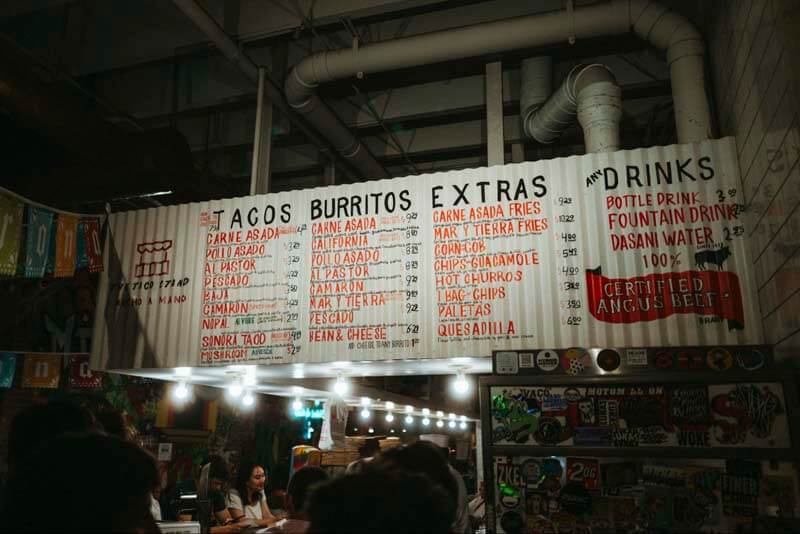
True, menus reflect the decor, theme, and tone of a restaurant. But advertising your offerings to hungry patrons can extend off the page, if you catch our drift.
For example, if you own a BBQ restaurant, taqueria, burger joint, etc., try a banner menu over the register. Not only is this an effective way to brand your business, but it’s also a clear visual of your menu that allows people to approach the counter ready to order. Not a bad way to keep the line moving!
If supporting local artists matters to you, try seeking out a calligrapher to handwrite your menu board. You can offer them an opportunity to refresh it every six months or so depending on your traffic and menu modifications.
Keep your menu fresh! This matters because businesses that update their menus are more likely to see an increase in sales, especially if you design a digital menu.
Consider a Digital QR Code Menu
QR codes have become a popular way to safely display menus as a result of the COVID pandemic.
In fact, Finances Online reports that QR code payments will see a growth of 240% between 2020 to 2025, spurred by demand for cashless payments due to the pandemic, as concluded by Juniper Research.
In its most basic form, QR code menus are simply electronic reproductions of printed menus.
Customers scan these QR codes, found on a printed card or table tent, with their smartphones to view the entire menu.
One of the main features of Untappd for Business is that you can make your own digital menus and display them through a QR code. Below are the benefits of applying QR code menus to your business.
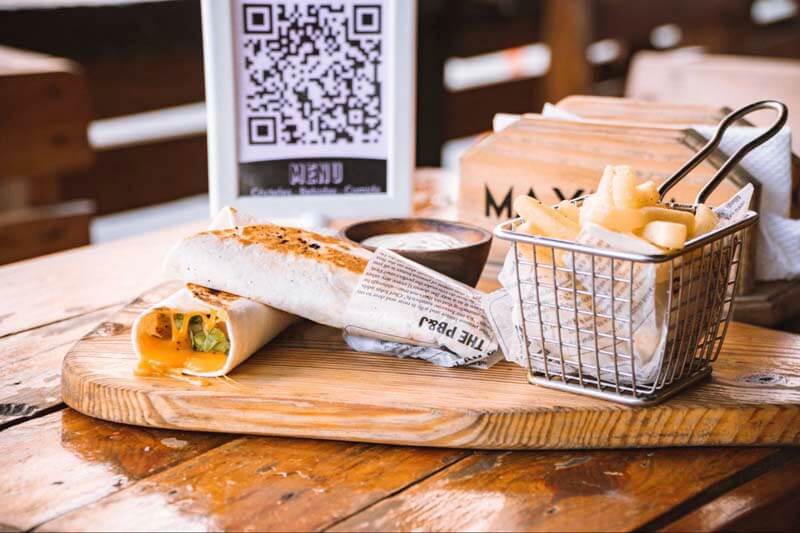
Advantages of QR Code Menus:
- QR code menus improve client health by reducing cross-contamination from touching physical menus
- When you need to make changes, QR code menus are more simple and less expensive to update versus printing a new batch of menus
- Going digital is an approachable way to reduce costs for reprinting and binding paper menus
- QR code menus give you the flexibility to adapt to changes in menu as the cost of food rises and falls, customizable seasonal dishes, or opportunities to add specials
Why Attractive Images Matter When Marketing Your Menu
As a restaurateur, it takes considerable effort to build not just an appetizing menu, but also a profitable one.
With the cost of ingredients continuing to rise, business owners are seeking out more creative and strategic approaches to market their menu to patrons in high volume.
But how to lure them in?
Taking attractive photos of food and posting them on social media is a low-cost, effective way to drive more traffic to your business—while also demonstrating your restaurant’s culinary skills and style.
If you’re a restaurateur looking to utilize the tools of food photography and technique to engineer your menu on social media, check out our blog on How to Take The Best High-Quality Food Photos for Your Restaurant's Instagram, Using Only Your Smartphone.
